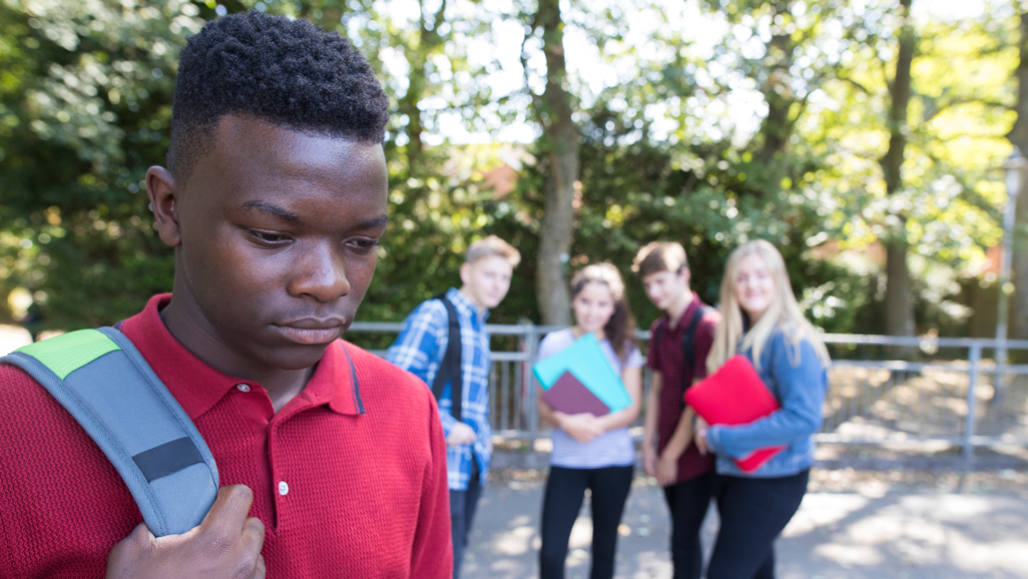In using the following activities, your main goal will be to develop great enthusiasm in the learner for analyzing the main message in a specific literature by performing different activities which involve the four skills, but mostly reading and speaking.
Fostering Critical Thinking About Texts from 7th to 11th
The students need a path to follow to increase their critical thinking and the way go a bit deeper to read and analyze complex informational and literary texts. Above all, it seems pertinent to remember that the teachers might ask questions during an informational text to promote analysis.
Activity
Pre-task
Teacher begins the lesson with an informal discussion of what students already know about the racism. T. tells them that they will be reading and discussing an article about a student who experienced racism and depression as a black teens . T guides the students to make predictions about the article based on its title and cover and what they already know about the racism?

LINK TO ACCESS TO THE ARTICLE
During
Task
Students already know that during reading the article, they're going to be asked a question that will take the whole class to guide them an answer, and everyone's answer could be different. What will be important is whether they can provide acceptable reasons to support their answers. A an example of questions could be:
1. What does the text say?
2. How does the text work?
3. What does the text mean?
4. What does the text inspire you to do?
5. What makes this reason true? Or what makes it false?
6. Are there times that it could be true, but other times when it could be false?
7. What examples can you give from the article or book to support a reason as acceptable?
8. Does it make sense? Why or why not?
9. Should we accept this as a supporting reason for the position?
This approach gives students time to think, to question, to debate, and to arrive at new conclusions to develop the dispositions needed to actively engage with their world.
The important thing to consider when conducting the reading phase is to make sure students understand the text entirely. This will allow them to fully participate in the discussion phase to follow.
With the guided reading approach, intermittent discussion should take place. The discussion breaks should be informal and focus on sharing an understanding of what is happening in the text.
Post Task
After proceeding with the discussion, make sure to establish a few guidelines with the students. These guidelines can include
Listening carefully to other students' questions, opinions, and reasons and responding to them in a helpful manner.
After a few lessons with the same text, book or subsequent readings, students will have had practice identifying and evaluating reasons for positions the T. gave them. Next, T allows them to generate several positions of their own in order to create new questions. This will help them to develop critical thinking skills.
After develop their opinion, T moves on to allowing them to generate their own questions. T will have to determine their readiness for identifying central themes and issues, but also, T can expect by this time for students to help guide each other in this process.
Another modification as students become more and more responsible for their own learning may include switching to peer discussion groups, which then report their results in writing or to the class.
African American Literature and History
All ages
Activity
Pre-task
1. Introduce this activity with a video, by explaining that people have differences, race, color, religion, believes, culture, individual likes and dislikes.
During Task
2. Discuss with students all that they have learnt about discrimination, prejudice, racism, difference, identity, inclusion, exclusion and the harmful effects it can have on people and society.
3. Before dividing the students into small groups, google search ‘anti-racism’ or Harmony Day posters to stimulate a range of ideas for their own posters.
4. Divide students into small groups and ask each group to come up with ideas for an anti-discrimination, racism and prejudice/ Harmony Day poster that can be displayed around the school. The message is that unfair behaviours are unacceptable and that a friendly, respectful and safe environment is what makes a good school.
Post Task
5. Ask groups to create posters (or other promotional materials) which may then be collated into a collage or series of work called Racism, Prejudice Discrimination. No way! or Alternatively, reach consensus as a class about what should be contained in the poster and have groups contribute to the creation of one Prejudice. No way! poster.




6. Display the finished poster or posters around the school.
Battle on the Gender
Activity The Role Play method
Pre-task
T explains some basic concepts, such as machismo, equality, inequality, co-responsibility, role, discrimination, and how they affect family and domestic life.
Printable role-playing cards
1. Role-playing or role play is a dynamic in which we simulate a situation that occurs in real life. For working equal opportunities, can be very useful this tool. Some examples of role play cards.
2. T. makes groups of 3 or 4 people (depending on the number of characters) and we distributes the role-playing cards to represent them. We can also create our own cards.
During Task
3. We leave 15-20 min to prepare them, it depends on the groups and the difficulty of the cards. It is convenient to help the group to understand the situation that is going to be represented, and don't forget that, although we can give it a touch of humor, the situations we are in representing they simulate injustices and inequalities that deserve some seriousness.
4. Once all the situations are represented, we reflect about what we have seen and dramatized. We can use clothes and objects to add more representation realism On this occasion, using the same groups and cards, we will change the role of the characters (marked with the word observer) from the previous role-playing. Thus, the role of This character will go from being passive to being active, and the course of situation changes completely.
3. T leaves again 15-20 min to prepare them, it depends on the groups and the difficulty of the cards. We must help groups to understand the change we are representing. In turn, we expose the representation again using the new role.
Post Task
Teacher finishes the activity explaining to the students that from an early age we have a clear idea of gender roles which include what things we like, behaviors and choices that are associated with being male or female. We then conform to those roles and identify with them. These
ideas come from all sorts of sources such us our families, the media, what we see in our world. Studies have even shown that parents speak differently to baby boys and girls and our cultural beliefs re-enforce what is seen to be acceptable behavior of males or females. This includes what we do, what we like and how we behave. It´s is an issue that is difficult to deal within the society, and it is still a continuous fight for rights.
The civil war: Art and Literature
Activity
Pre-task
Teacher explains the lives of women changed dramatically during the American Civil War. They played important roles both at home and on the battlefield. On the home front, women for both sides had to manage the household while their husbands and sons were off fighting battles. On the battlefield, women helped to supply the soldiers, provide medical care, and worked as spies. Some women even fought as soldiers.
During Task
Instructions: To take the quiz, click on the answer. The circle next to the answer will turn yellow. You can change your answer if you want. Once you have answered all the questions, click the "Done" button below the questions. Your score will be displayed. The balls next to the correct answers will turn green so you can see the right answers.
Post Task
Students will be able to develop understanding of how the Civil War affected the lives of women and give a comparison with the women in this century.
The Romantic period in America Literature and Art
Activity
Pre-task
1- Begin the lesson by asking students to write a paragraph response to the following question: What does the Romantic period mean? The students share their answers with the class and discuss how students' answers are similar and different. Write several answers on the board and save them for later.
During Task
2- Students click to this link Characteristics of Romanticism and discuss the five characteristics of Romanticism. Ask questions such as:
What are the five characteristics of Romanticism?
What were some of the basic Romantic beliefs?
Do you think these beliefs are relevant today? Why or why not?
How has your understanding of Romanticism changed?
Briefly describe your definition of Romantic.
How is your definition of Romantic similar to and different from Romanticism?
3- After a whole-class discussion of these characteristics, break the class into small groups and have each group discuss one of them. Do group members agree or disagree with the Romantic philosophy on this point? Why?.
Post Task
4- Each group should be prepared to present their position to the class during the next session and explain how the elements establish both work of art and a piece of literature as a example of Romanticism.
No comments:
Post a Comment